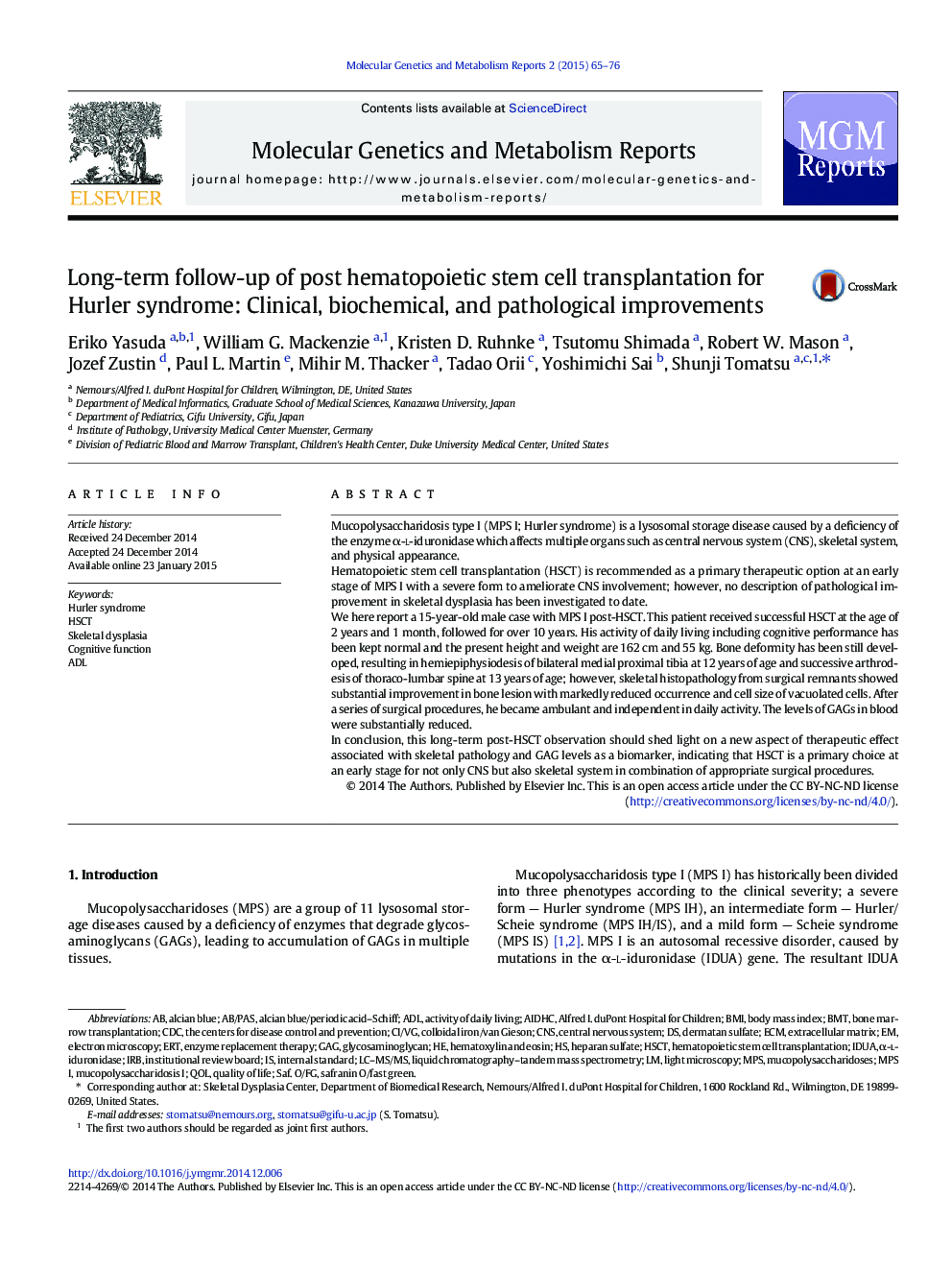| کد مقاله | کد نشریه | سال انتشار | مقاله انگلیسی | نسخه تمام متن |
|---|---|---|---|---|
| 2058943 | 1543984 | 2015 | 12 صفحه PDF | دانلود رایگان |
• The first report to describe the post-HSCT bone pathology on MPS I
• ADL including “movement,” “movement with cognition,” and “cognition” post-HSCT is kept normal.
• Skeletal pathology post-HSCT shows dramatic improvement in bone lesion.
• Levels of GAGs in blood are nearly normalized post-HSCT.
• HSCT is a primary therapeutic option at an early stage of MPS I.
Mucopolysaccharidosis type I (MPS I; Hurler syndrome) is a lysosomal storage disease caused by a deficiency of the enzyme α-l-iduronidase which affects multiple organs such as central nervous system (CNS), skeletal system, and physical appearance.Hematopoietic stem cell transplantation (HSCT) is recommended as a primary therapeutic option at an early stage of MPS I with a severe form to ameliorate CNS involvement; however, no description of pathological improvement in skeletal dysplasia has been investigated to date.We here report a 15-year-old male case with MPS I post-HSCT. This patient received successful HSCT at the age of 2 years and 1 month, followed for over 10 years. His activity of daily living including cognitive performance has been kept normal and the present height and weight are 162 cm and 55 kg. Bone deformity has been still developed, resulting in hemiepiphysiodesis of bilateral medial proximal tibia at 12 years of age and successive arthrodesis of thoraco-lumbar spine at 13 years of age; however, skeletal histopathology from surgical remnants showed substantial improvement in bone lesion with markedly reduced occurrence and cell size of vacuolated cells. After a series of surgical procedures, he became ambulant and independent in daily activity. The levels of GAGs in blood were substantially reduced.In conclusion, this long-term post-HSCT observation should shed light on a new aspect of therapeutic effect associated with skeletal pathology and GAG levels as a biomarker, indicating that HSCT is a primary choice at an early stage for not only CNS but also skeletal system in combination of appropriate surgical procedures.
Journal: Molecular Genetics and Metabolism Reports - Volume 2, March 2015, Pages 65–76
